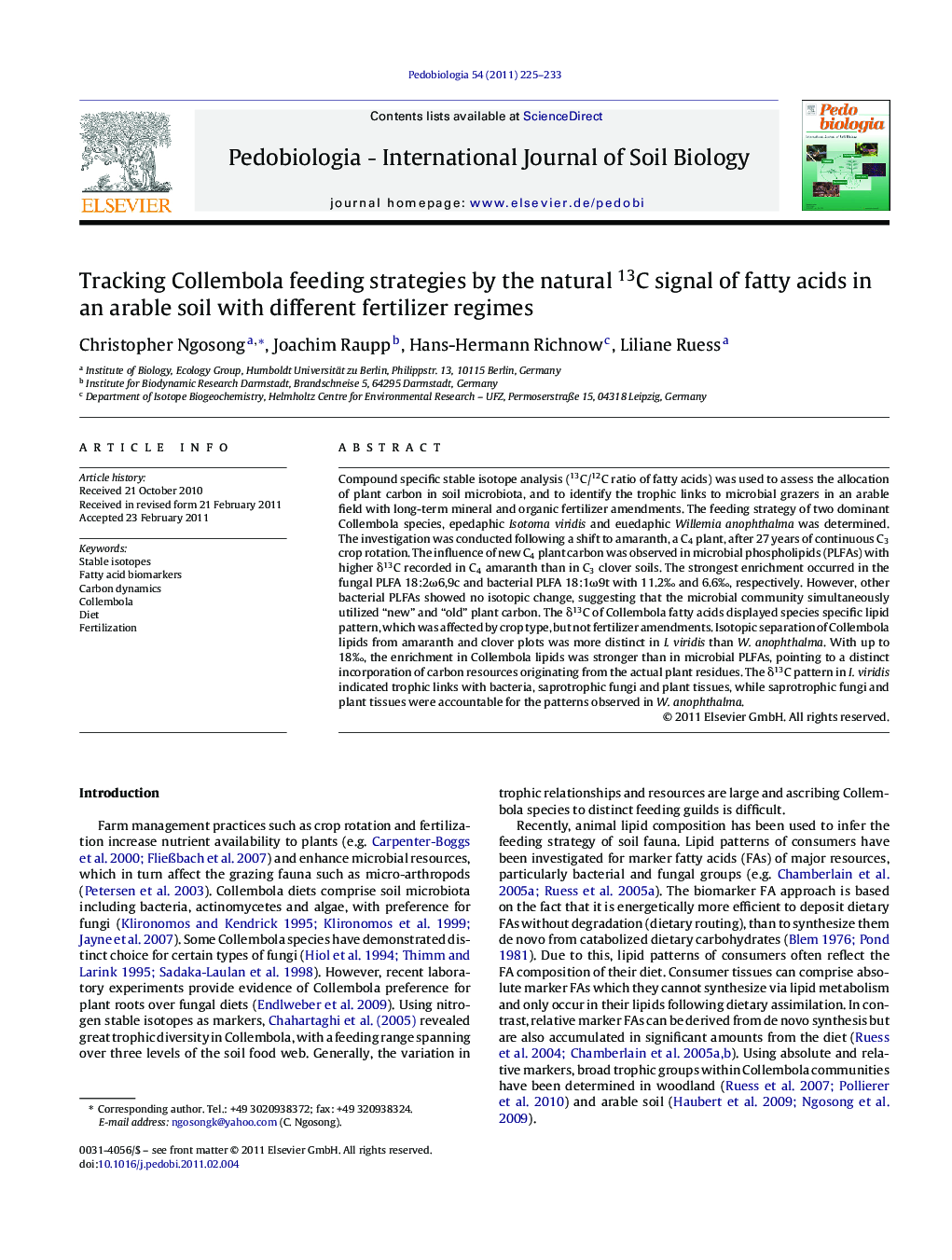| کد مقاله | کد نشریه | سال انتشار | مقاله انگلیسی | نسخه تمام متن |
|---|---|---|---|---|
| 2061189 | 1076443 | 2011 | 9 صفحه PDF | دانلود رایگان |

Compound specific stable isotope analysis (13C/12C ratio of fatty acids) was used to assess the allocation of plant carbon in soil microbiota, and to identify the trophic links to microbial grazers in an arable field with long-term mineral and organic fertilizer amendments. The feeding strategy of two dominant Collembola species, epedaphic Isotoma viridis and euedaphic Willemia anophthalma was determined. The investigation was conducted following a shift to amaranth, a C4 plant, after 27 years of continuous C3 crop rotation. The influence of new C4 plant carbon was observed in microbial phospholipids (PLFAs) with higher δ13C recorded in C4 amaranth than in C3 clover soils. The strongest enrichment occurred in the fungal PLFA 18:2ω6,9c and bacterial PLFA 18:1ω9t with 11.2‰ and 6.6‰, respectively. However, other bacterial PLFAs showed no isotopic change, suggesting that the microbial community simultaneously utilized “new” and “old” plant carbon. The δ13C of Collembola fatty acids displayed species specific lipid pattern, which was affected by crop type, but not fertilizer amendments. Isotopic separation of Collembola lipids from amaranth and clover plots was more distinct in I. viridis than W. anophthalma. With up to 18‰, the enrichment in Collembola lipids was stronger than in microbial PLFAs, pointing to a distinct incorporation of carbon resources originating from the actual plant residues. The δ13C pattern in I. viridis indicated trophic links with bacteria, saprotrophic fungi and plant tissues, while saprotrophic fungi and plant tissues were accountable for the patterns observed in W. anophthalma.
Journal: Pedobiologia - Volume 54, Issue 4, 10 July 2011, Pages 225–233